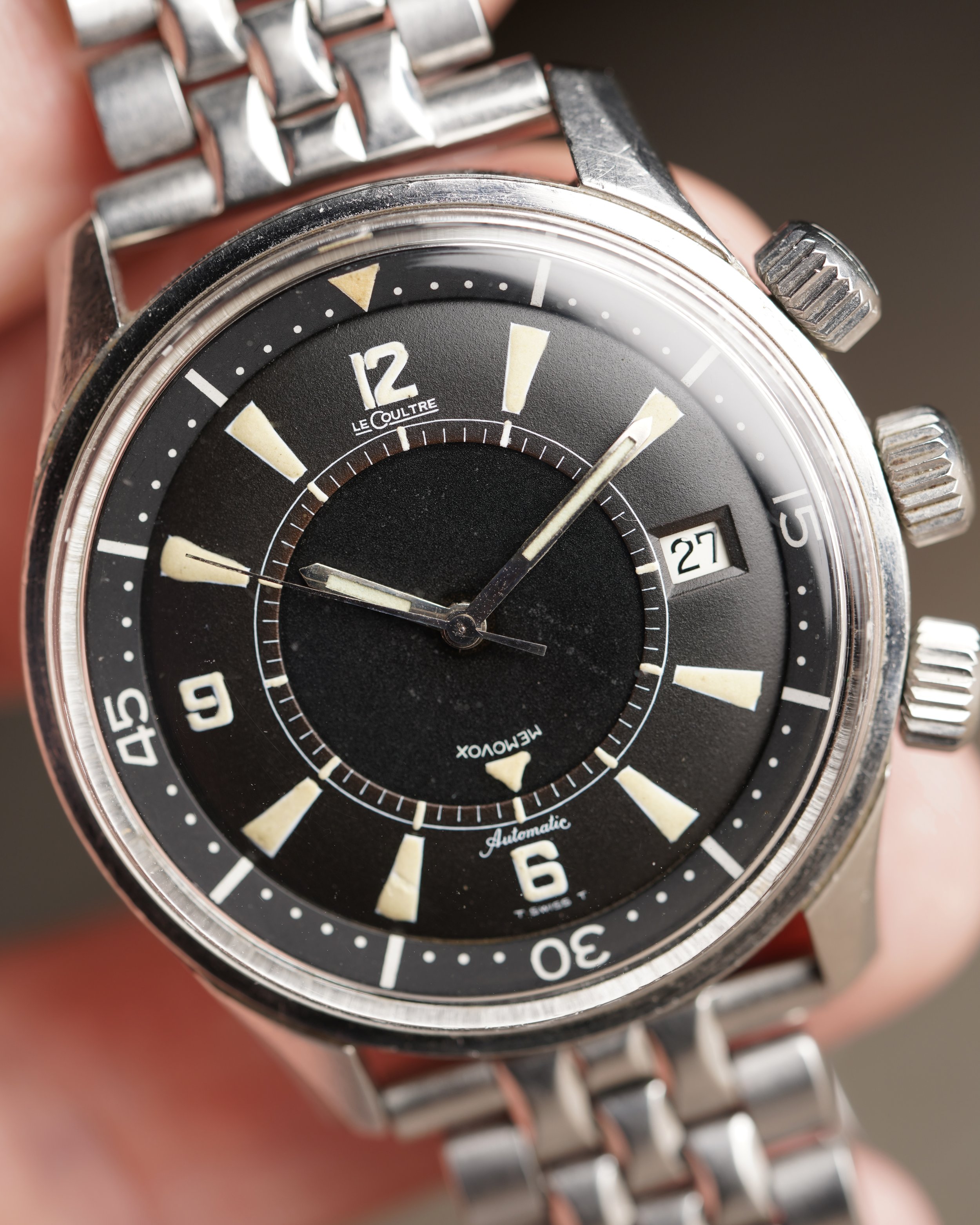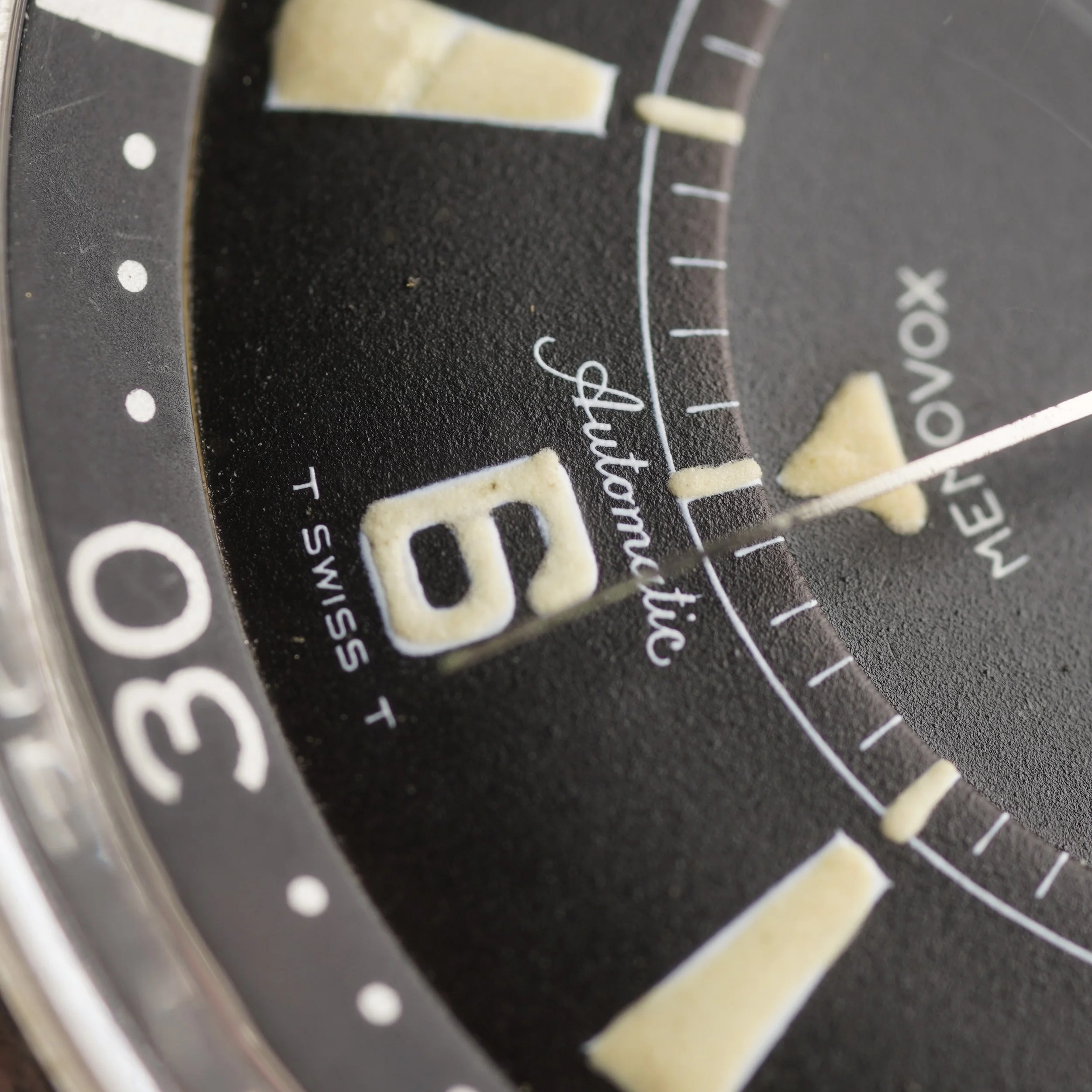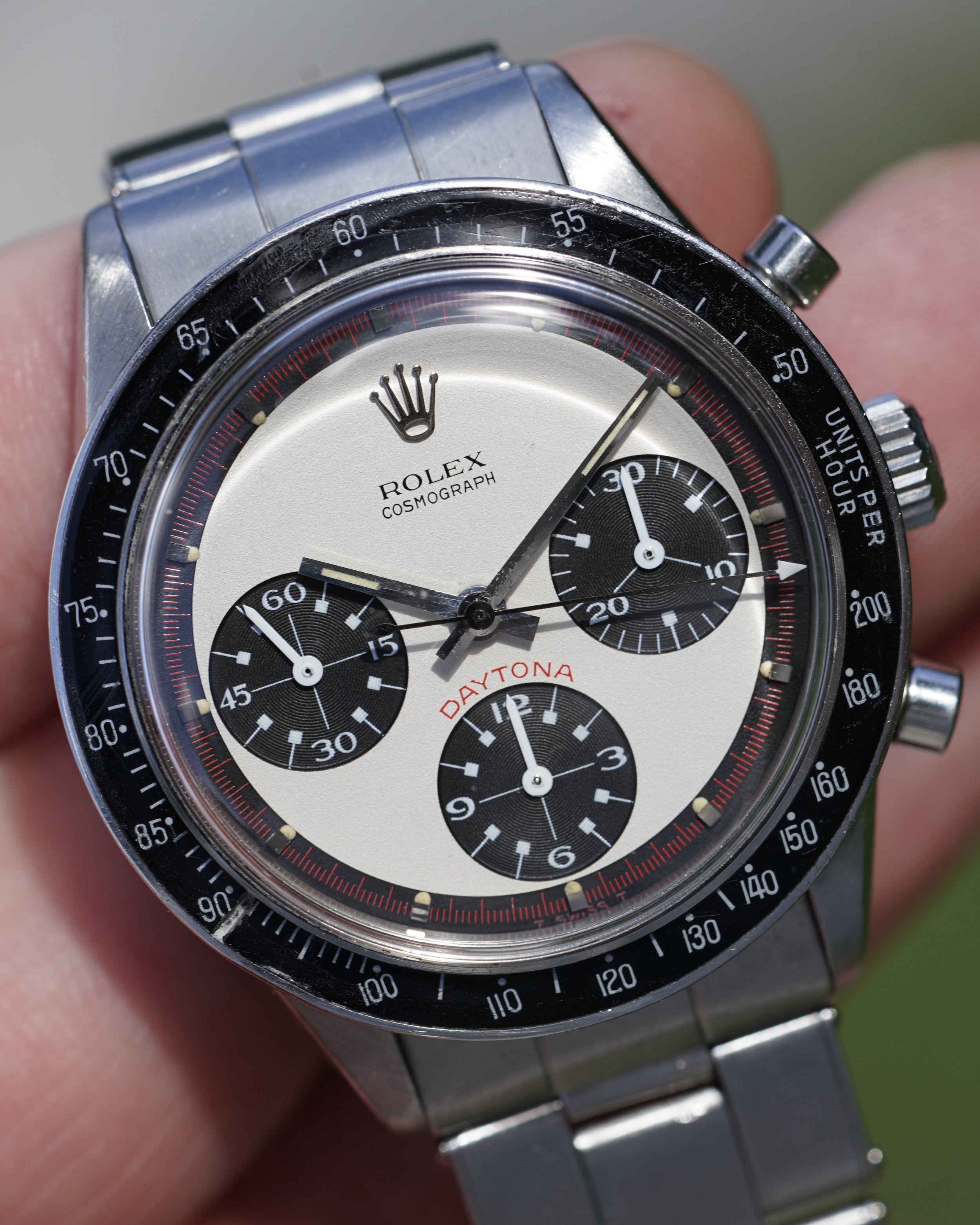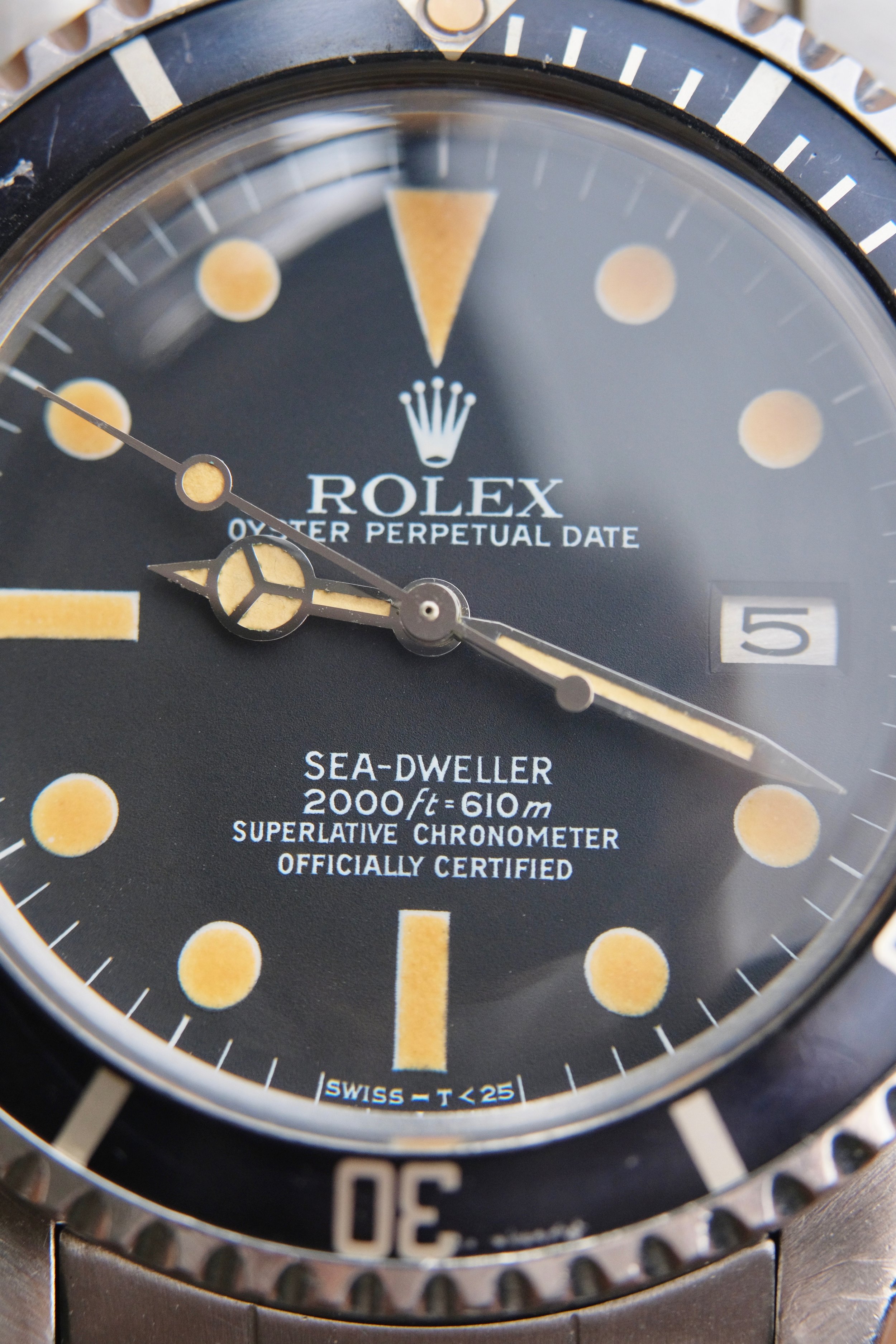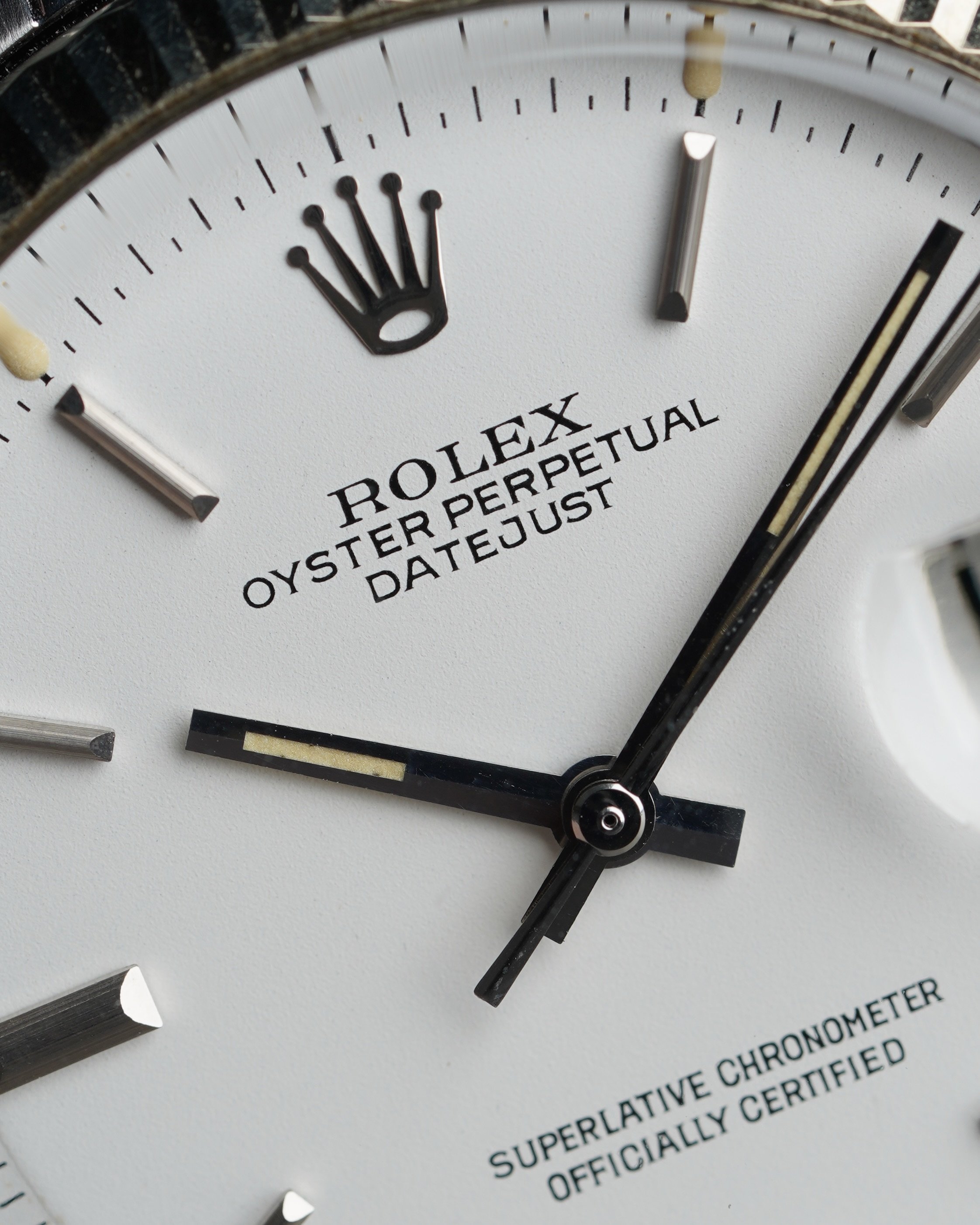What is a "Matte" Dial?
By Charlie Dunne
The term “Matte” dial refers to Rolex dials produced post-1966 that are easily identifiable from the gradient dial surface with stamped printing. While many manufacturers used matte dials, more often the discussion centers around models produced by Rolex. The base of these dials is made of a metal plate generally made of brass. These would often be layered with a black paint (however there are variants within Rolex and other manufacturers that use whites and other base colors). Oftentimes for Rolex sports models, white paint for letters and hour markers would then be applied by hand-applied luminous material without metal surrounds. Compared to gilt glossy dials, matte dials are less intensive to produce. This would become evident in the mid-1960s with the revolution in pad-printing technology.
As cited in my ‘Collector’s Guide on the Submariner 5512’, a key figure in dial making is German master engraver, later turned industrialist, Wilfried Philipp. Philipp is the founder of TAMPOPRINT and is recognized for developing the modern interpretation of pad printers. Philipp introduced the technique of pad printing or tampography to wristwatch dials in circa 1965 with his prototype pad printing machine with gelatin pads. The gelatin pads were very resourceful, however proved to be low endurance. In 1968, Philip would invent silicone pad printing devices that allowed the process to evolve into an industrial level and is used within the watch industry to this day. Ironically, pad printing technology would go on to have a crucial role in the branding of countless products (including the likes of LEGO by the early 1970s), yet the inception centers around our beloved watch dials. Matte dials would eventually be phased out of production by circa 1990 with the end of the Rolex Explorer reference 1016 and Rolex Air-King reference 5500 in circa 1989.
Below you can see various examples of vintage watches featuring matte dials. Enjoy!






